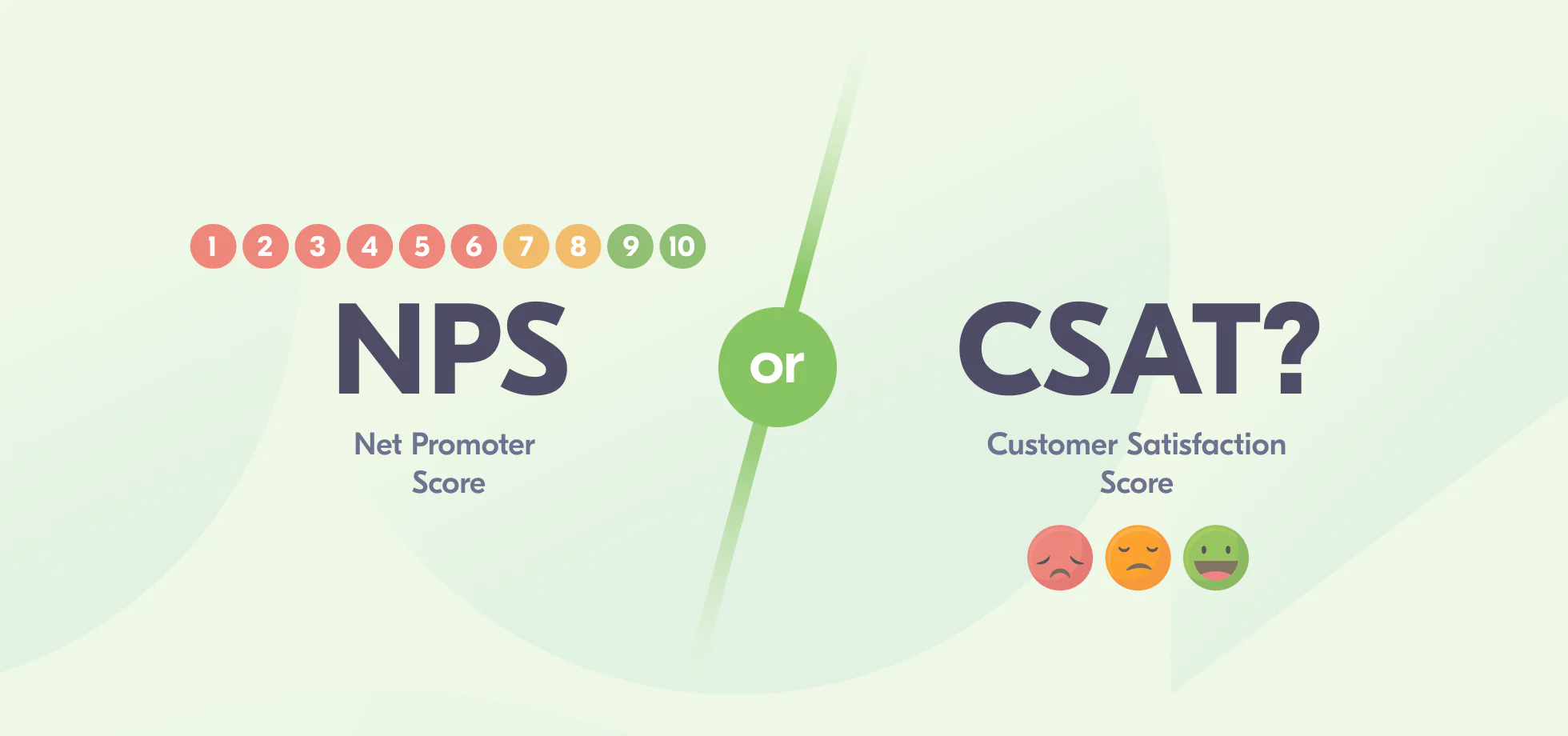CSAT vs NPS – Which Customer Satisfaction Metric Is Best?

In the realm of customer satisfaction metrics, two prominent contenders stand out: CSAT (Customer Satisfaction Score) and NPS (Net Promoter Score). Both metrics are widely used by businesses to gauge customer satisfaction and loyalty, but they operate on different principles and provide distinct insights. Understanding the differences between CSAT and NPS is crucial for businesses aiming to measure and improve their customer satisfaction effectively.
CSAT (Customer Satisfaction Score)
CSAT is a metric used to assess how satisfied customers are with a specific interaction or experience. Typically, customers are asked to rate their satisfaction on a scale, often ranging from 1 to 5 or from very dissatisfied to very satisfied. The average score represents the CSAT for that particular interaction or experience.
NPS (Net Promoter Score)
NPS, on the other hand, measures customer loyalty and satisfaction by asking customers a single question: "How likely are you to recommend our product/service to a friend or colleague?" Respondents provide a rating on a scale from 0 to 10, with 0 being highly unlikely and 10 being highly likely. Based on their responses, customers are categorized into three groups: Promoters (score 9-10), Passives (score 7-8), and Detractors (score 0-6). The NPS is calculated by subtracting the percentage of Detractors from the percentage of Promoters.
Choosing the Right Metric
Deciding which metric to use depends on various factors such as the nature of the business, the type of interaction being measured, and the specific insights desired.
For instance, an offline survey app may opt for CSAT to gather immediate feedback on user experience after a customer completes a transaction or interacts with a feature. Customers could rate their satisfaction with the app's usability, speed, and overall performance. This real-time feedback allows the app developers to pinpoint areas for improvement quickly.
However, if the goal is to understand customers' likelihood to recommend the app to others, NPS would be the preferred metric. By identifying Promoters, Passives, and Detractors, the app developers can focus on converting Detractors into Promoters and leveraging Promoters to drive word-of-mouth referrals, ultimately increasing user acquisition and retention.
Example Scenario: Offline Survey App
Let's consider an example scenario involving an offline survey app used by retail stores to collect customer feedback. The app allows store managers to create and conduct surveys even without an internet connection, enabling them to gather valuable insights directly from customers on-site.
- CSAT Implementation: After completing a purchase, customers are prompted to rate their satisfaction with the in-store experience using the offline survey app. They can provide ratings for aspects such as staff helpfulness, product availability, and checkout process. The app aggregates these ratings to generate a CSAT score for each store location.
- NPS Implementation: Alongside CSAT, the app periodically sends out NPS surveys to customers via email or SMS, asking them about their overall satisfaction and likelihood to recommend the store to others. Based on the responses, the app calculates NPS scores for different store locations, identifying areas with high advocacy and those needing improvement.
Conclusion

While both CSAT and NPS offer valuable insights into customer satisfaction and loyalty, they serve different purposes and provide distinct perspectives. Choosing the right metric depends on the specific goals and objectives of the business. For businesses seeking to improve specific aspects of the customer experience, CSAT may be more suitable, whereas those focused on building brand advocacy and loyalty may find NPS more relevant. Ultimately, businesses can leverage both metrics strategically to gain a comprehensive understanding of customer satisfaction and drive continuous improvement efforts.
Start collecting important feedback now with inBook. Our service is designed to help you gather valuable insights and make data-driven decisions to propel your business forward.
Learn more about how inBook can benefit your company by visiting our FAQ or exploring our Pricing options.